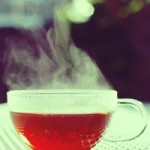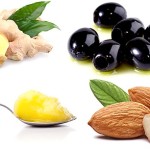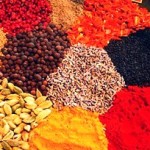The interesting thing about managing such dual dosha types (and dual doshas are very common) is that the foods, which pacify the one, may aggravate the other, and this was […]

According to Ashtanga Hridayam, Vata dosha is dry, light, cool, rough, thin and agile. These are the major qualities of Vata, as described in the authentic source, mentioned above. By knowing these qualities we can identify the signs of Vata dosha imbalance.
If a person displays some or all of these qualities to a substantial degree, it means that Vata dosha is predominant in that person.
Actually there are three doshas: Vata, Pitta and Kapha, and they together form Prakriti or natural personal constitution according to Ayurveda. Originally Prakriti is translated from Sanskrit as ‘Nature’, and in terms of Ayurvedic medicine, it describes the natural tendencies in every person, including physical, mental and emotional levels.
If you belong to a Vata type, such things as fickleness and motion are common in you. Your mind is full of energy and possesses a great creative potential. If your Vata is well-balanced, you will experience an abundance of energy and inspiration (but both may come in bursts though); your body will be slender and dexterous.
Sometimes you may suffer from fatigue, skin dryness and your digestion is usually quite sensitive (sometimes weak) to a type of food and time when you take your meals. Your limbs may be too susceptible to cold.
When Vata is out of balance, you may lose too much weight; get indigestion, high blood pressure, anxiety and arthritis.
There are various diseases that, according to Ayurveda, originate from the imbalance of Vata dosha and that can be cured once the dosha is brought back to balance again.

The interesting thing about managing such dual dosha types (and dual doshas are very common) is that the foods, which pacify the one, may aggravate the other, and this was […]

Vata Pitta Meaning According to Ayurveda According to Ayurveda our bodily constitution is made of three doshas: Vata, Pitta and Kapha, which determine our bodily and mental state, our emotions […]

Vata Kapha Dosha Characteristics First of all, there are two sides of this matter: one is a person of Vata Kapha dosha type, and the other is Kapha-Vata type. Doesn’t […]

There are various ways to balance Vata dosha, and the more you combine the better. Vata is naturally light, cool, changeable, quick-moving and dry, so balancing it means minimizing these […]

The first point to consider here is that we may have Vata dosha as our dominant dosha, or as a secondary one. When we have Vata dosha imbalance, and Vata […]

The balancing lifestyle for Vata Dosha is aimed at reducing Vata’s qualities such as being cold, dry, changing and light, which occur in excess when the dosha is out of […]

Vata dosha is a combination of Air and Ether elements; it is cold and dry, irregular and agile, so to bring it back to balance you need to use essential […]

We have already touched the balancing diet for Vata dosha, now let’s see what are the best and the worst foods for Vata. Preparing meals for Vata becomes much easier […]

What is a Balancing Diet for Vata Dosha? While there are many things that can aggravate a dosha, food is one of the most influential factors, which we ‘face’ on a […]